This is a brief introduction to the mineral Pyrite, or when we were young, known as Fools Gold. I’m also going to tell you about one mineral species which forms kidney stones in people.
Pyrite is an iron sulfide with two atoms of sulfur for every iron atom, giving it the formula FeS2. [Ref 1] It is found in varied geological environments, such as in the hydrothermal veins of metal mines, [Ref 1] or in black shales, having as its sources the iron and sulfur from former sea life e.g. [Ref 2]
Because of its brilliant golden color, and often pristine crystal forms, it is a favorite among collectors. Specimens of pyrite from metal mines are often quite spectacular, as seen in the photos below, of Pyrite accompanying the zinc ore mineral Sphalerite and quartz, and alone in crystal clusters as found in metal mines.
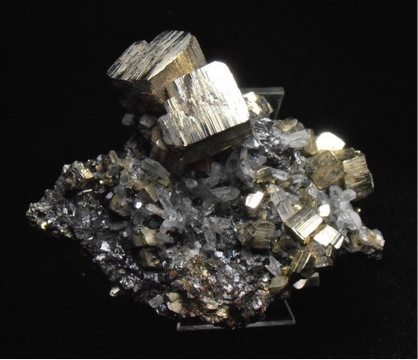
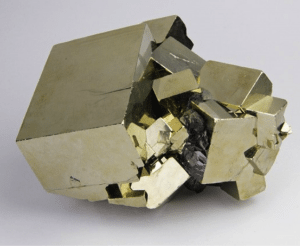
Pyrite crystallizes in the cubic crystallographic system. (Ref 1) It exhibits a number of forms, as seen in Figures 1, 2, 3 & 4, either singularly such as the cube, or in combinations of these forms. Scrolling through the gallery of images available when Googling “Pyrite” will show you specimens exhibiting such forms from many worldwide locations.
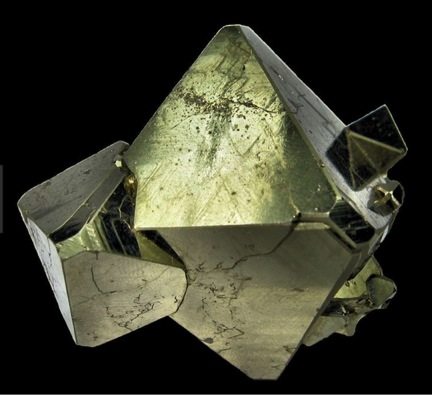
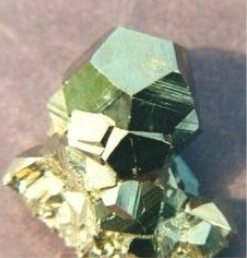
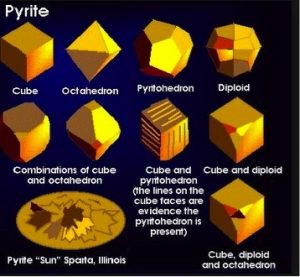
Pyrite specimens found in black shales rich in organic-materials, occur in a number of interesting forms, found when replacing an animal and forming a fossil or in sun shapes formed of tiny radiating crystals, and as aggregates of small crystals as seen in the photos below.
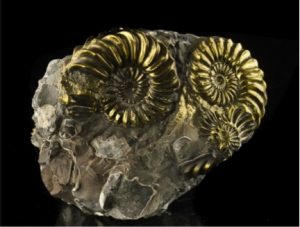
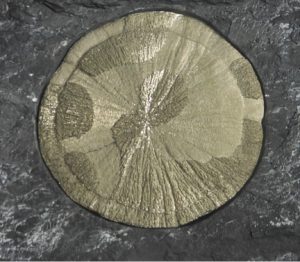

Above, I’ve emphasized pyrite accompanying other ore minerals. However, pyrite itself used to be an important ore for the production of sulfuric acid and sulfur. (Ref 3) The first step in these recoveries was roasting the ground pyrite in the presence of air. (Ref 4) The past and present most important use of pyrite is as an ore of gold. (Ref 3) In these ores, gold occurs as an impurity. (Ref 5)
Ending on a different note, one type of kidney stone is chemically a calcium phosphate which has the same composition as the mineral Apatite, (Ref 6), an example of one of the minerals present in life forms.
Ref 1 https://www.mindat.org/min-3314.html
Ref 2 http://www.indiana.edu/~sepm04/PDF/JS-J28-pyrite_balls.pdf
Ref 3 http://geology.com/minerals/pyrite.shtml
Ref 4 http://www.saimm.co.za/Conferences/Sulphur2009/101-110_Runkel.pdf
Ref 5 Abstract in: http://www.otago.ac.nz/geology/research/gold/geology-and-gold/gold-and-arsenic.html



